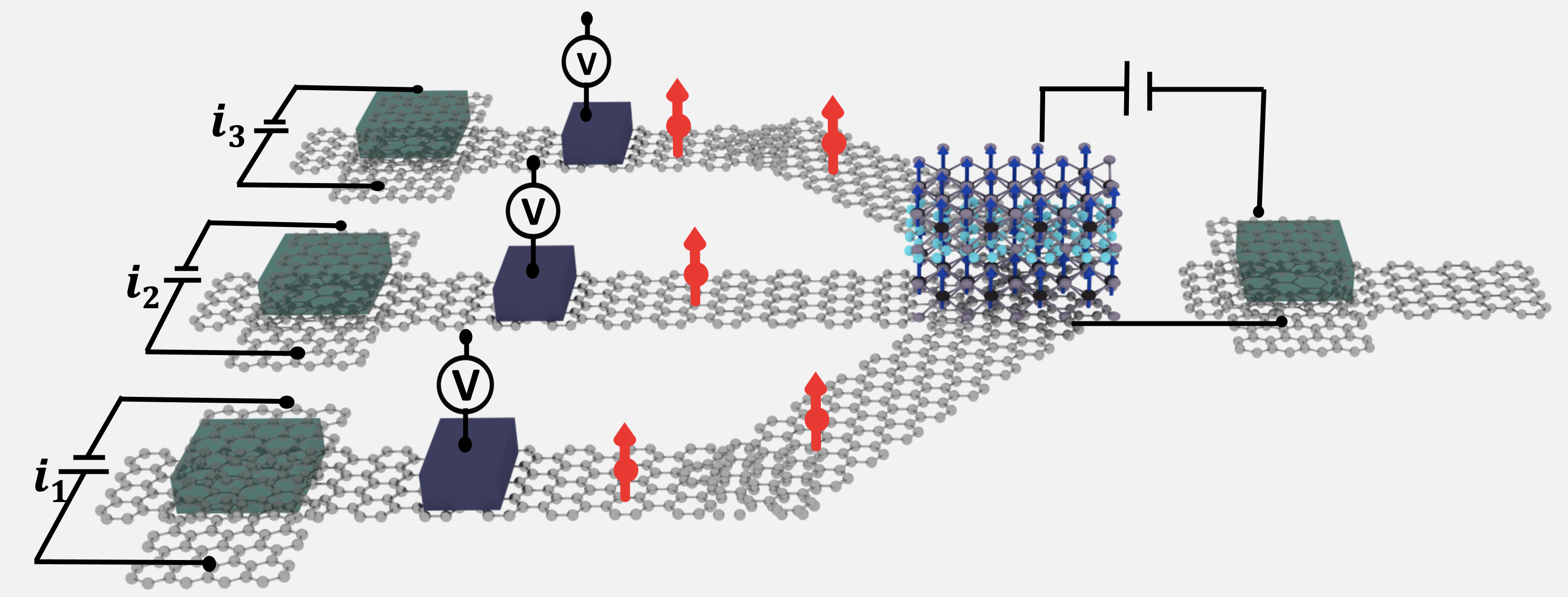Robotic control with AI hardware
This project is funded by DSTL. It aims to study robotics vehicle movement with AI hardware.


Next generation 2D spin computing device
This ongoing project is funded by the Royal Society URF 2024-2032
This ongoing project plans to design novel computing devices using emerging two-dimensional materials as building blocks. These extraordinary materials, characterized by their atomically thin nature and complementary physical properties, can be freely stacked to form new material systems with any desired features. The project specifically plans to harness spin conductance properties in two-dimensional systems for device functionalities, diverging from the traditional charge conductance-based operations in silicon transistors. This unique approach will allow the designing of nanodevices that execute three fundamental computing functionalities: information storage, logic operations, and neuromorphic communication – all operating on an ultrafast timescale with exceptional energy efficiency. The first two schemes will profoundly influence the reshaping of classical computer architectures, while the third will be revolutionary for building futuristic brain-inspired computing hardware.

Past Projects
Spin waves to the rescue: Development of a spintronic reservoir computing platform (funded by EPSRC)
This project was in collaboration with Extremag-University of Exeter (UK), CIC nanoGUNE-San Sebastian (Spain), AGH University-Karkow (Poland), AIST-Tsukuba (Japan), and Western Digital-San Jose (USA)
Description: Reservoir Computing (RC) leverages fast nonlinear dynamics in analogue physical systems to map a system's spontaneous transient response to solutions of traditionally hard problems such as classification tasks and signal prediction. This technique effectively ties memory and processing tasks to the intrinsic materials properties. The specific details of the physical system in which RC is implemented, however, are not relevant so long the following key criteria are met: dynamical non-linearity, high phase space dimensionality, uniquely reproducible initial state, easy out-of-equilibrium perturbation, and readability of dynamical state. The main quest is to identify a system suitable for the task, which is not plagued by real-world-incompatible requirements. Our proposed solution is based on driven spin-wave excitations which guarantee both sufficiently complex transient responses, controlled chaoticity, as well as providing a natural spintronic platform for straightforward driving and reading of dynamical magnetic states. Our proposed work aims at demonstrating the versatility of spin-wave interference as the key candidate for the implementation of RC in a real-world device. We believe that spin-waves in magnetic nanostructures are ideal candidates for developing drop-in substitutes for circuit components, as well as stand-alone devices.
See publication:
Magnetization dynamics are driven by displacement currents across a magnetic tunnel junction.
C.K. Safeer, Paul S. Keatley, Witold Skowroński, Jakub Mojsiejuk, Kay Yakushiji, Akio Fukushima, Shinji Yuasa, Daniel Bedau, Fèlix Casanova, Luis E. Hueso, Robert J. Hicken, Daniele Pinna, Gerrit van der Laan, and Thorsten Hesjedal
